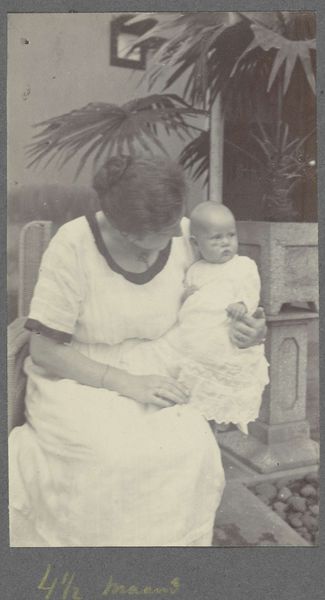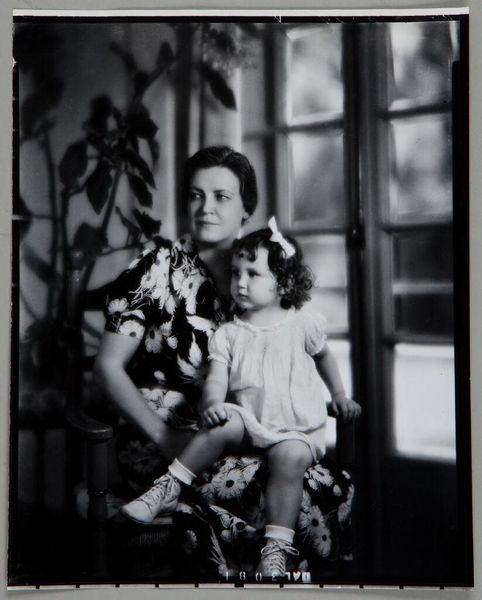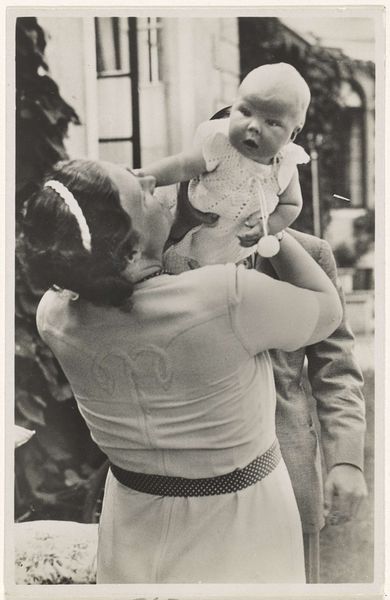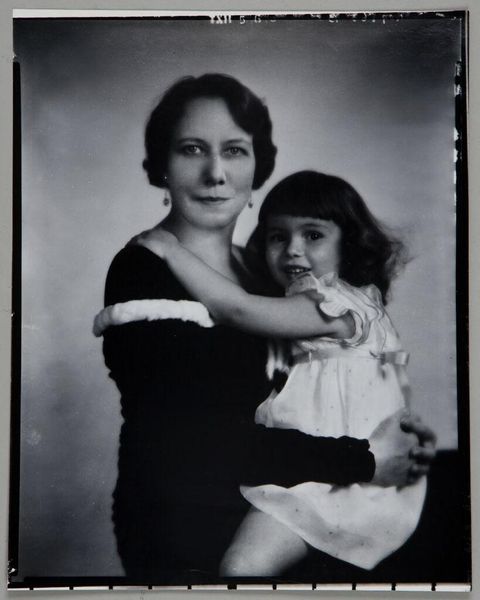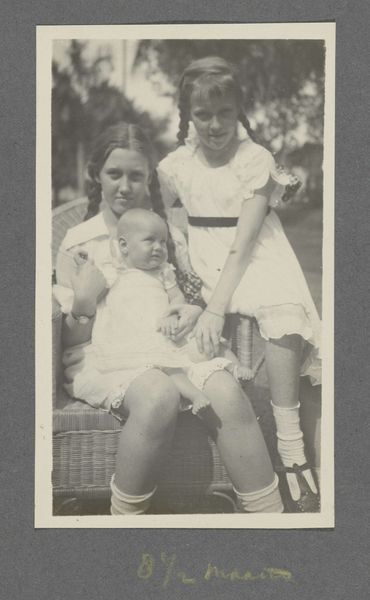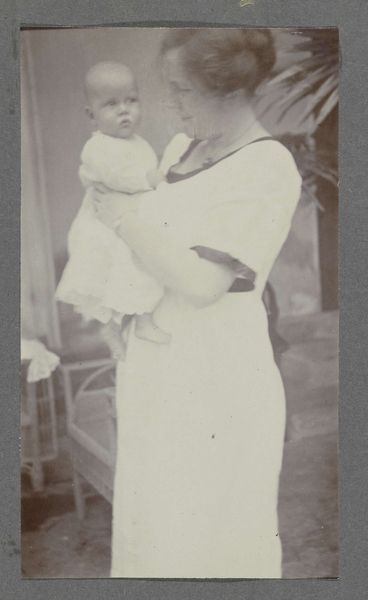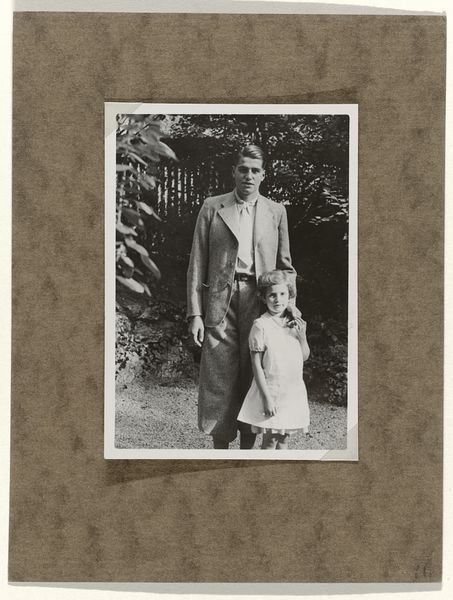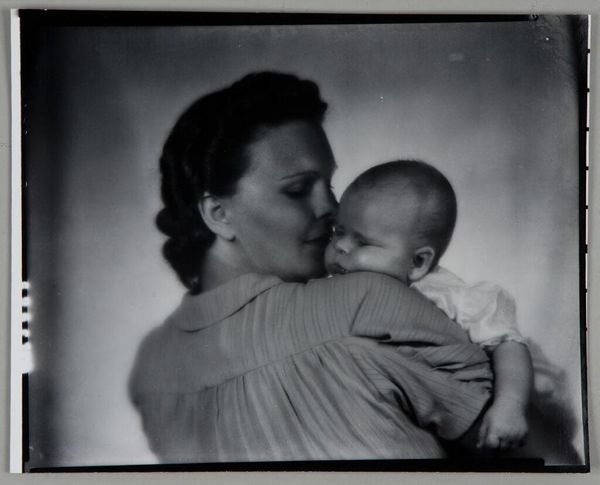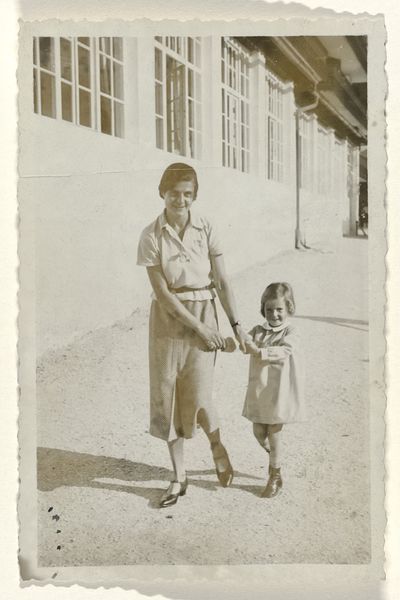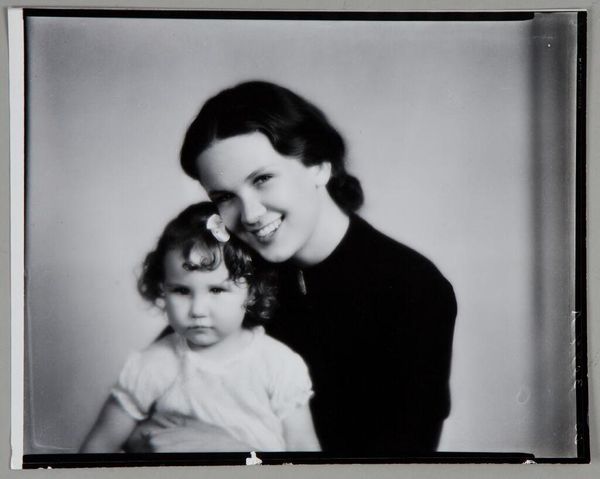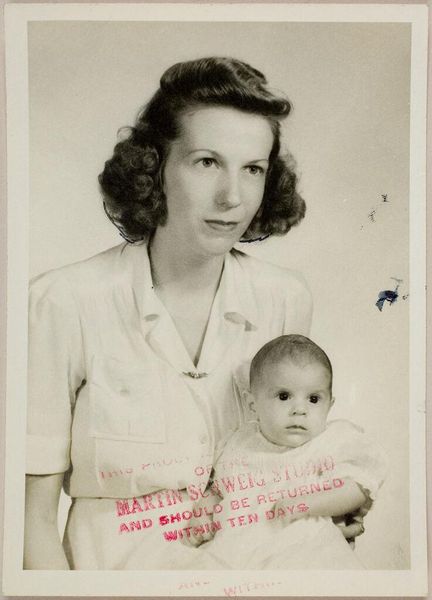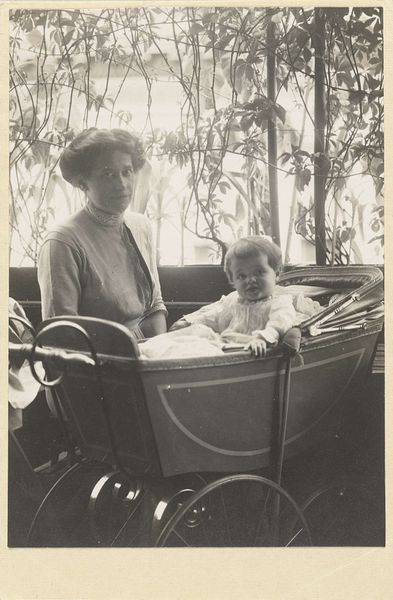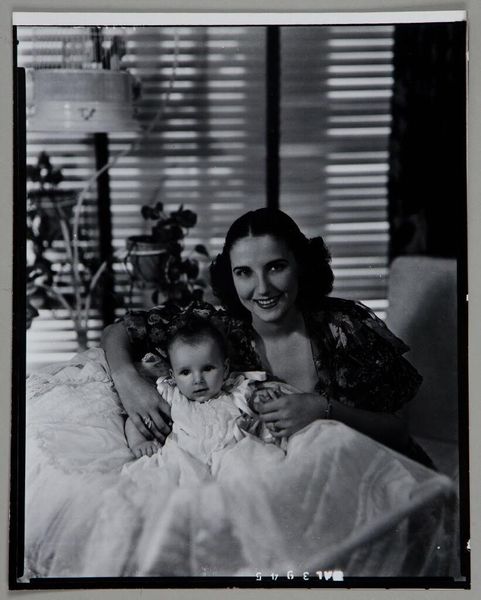
Dimensions: height 12 cm, width 16.8 cm, height 16 cm, width 22.2 cm
Copyright: Rijks Museum: Open Domain
Curator: The overall tonality of this photograph immediately strikes me—there's a remarkable contrast between the shadowed foreground and the brightly lit background. Editor: Indeed. Let's dive into the specifics. What we're looking at is a gelatin silver print from between 1945 and 1946. The photograph, created by Anefo, is titled "Kind geboren in Japans interneringskamp na de bevrijding," which translates to "Child born in a Japanese internment camp after liberation." It now resides here at the Rijksmuseum. Curator: That title resonates deeply. The very act of documenting this child, in this tender portrait with her mother, it speaks to resilience, a life blooming amidst unimaginable hardship. Note the palm trees in the background. They're not just setting—they almost become a symbol of survival and endurance. Editor: The historical context is paramount here. The image acts as evidence, a powerful reminder of the internment camps and the experiences of those who lived, and were born, within them. It challenges us to confront a difficult past and to remember its impact. This picture offers insight into the history, collective memory, and experience after the second world war. Curator: I'm drawn to the child's expression. There’s an almost unsettling knowing in her eyes. It's a face that belies innocence and seems to carry the weight of shared experience and transgenerational memory. Is that too strong an interpretation? Editor: Not at all. The framing concentrates the focus on mother and daughter, subtly emphasizing the historical narrative and universal story about persecution during wartime. That little knitted overall seems quite significant to me now, indicating resilience by crafting an existence within hardship, an assertion of culture, tradition and personal value despite confinement. Curator: Absolutely, this image is complex. There is tenderness alongside the hardness and both merge through a lens of lived reality. The image becomes a statement of reclaiming identity after being stripped of culture, language, tradition. It holds space to honor that. Editor: Considering its position within the museum's collection, I think its primary importance lies in providing a crucial visual record that can educate and engage a wider audience with that specific chapter of the post-war story. Curator: Precisely. It reminds us that history is etched into faces, landscapes, and even in the simplest acts of human connection. Editor: A profound reminder, indeed.
Comments
No comments
Be the first to comment and join the conversation on the ultimate creative platform.
